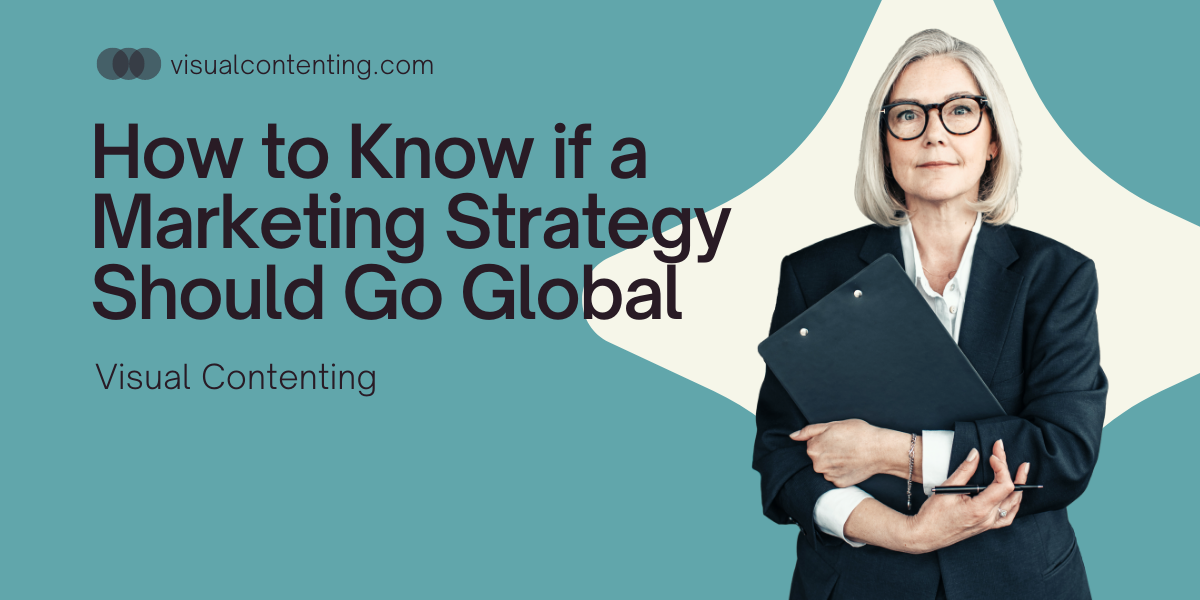The world is a big place. However, thanks to the internet, e-commerce has allowed many businesses to expand their operations internationally.
Companies may go global for various reasons, including the opportunity to increase profit margins. However, the benefits go beyond the profits. Several businesses looking to expand do so because non-U.S. markets hold more purchasing power, economic growth and customers.
Marketing professionals need a strategy that differs from the one they use in their home country as companies increase their reach. Before doing that, it’s vital to know if it’s the right time to make a global marketing plan.
The Pros and Cons of Going Global
Business leaders should ask whether expanding internationally is the right fit for their company. Entering the global market comes with various advantages alongside a few disadvantages.
Learning about the pros and cons can help marketers determine whether they should deploy a global marketing strategy.
Reach a Wider Target Market
Businesses planning to create a global marketing plan have increased access to consumer bases practically anywhere in the world. Plus, the more people they can reach, the higher the chances of finding customers who may need what they’re selling.
Find More Brand Awareness Opportunities
The primary reason to go global may be to increase sales, but brand awareness is also important. Taking the global marketing approach means a company has the opportunity to shine with an international reach.
For instance, even when a brand doesn’t sell in China, it can still become well-known. That’s because the web and global marketing make it easier to become a viral sensation.
Outshine the Competition
Positioning a brand in a market that offers the same products can make for strong competition. However, going global means companies can sell more than their competitors.
Build Global Connections
A global marketing strategy also provides international networking opportunities. Business leaders never know when one connection may lead to another, and the chances of connecting with someone overseas could lead to a partnership.
Know Some Products Don’t Translate on a Global Scale
When thinking big in a marketing strategy, it helps to consider that some products and services may not perform well globally.
For instance, suppose an interior design company offers one-on-one services. How will it market and serve clients in other countries?
Realize the Market May Not Exist
Companies have to consider the fact there could be economic, governmental and cultural barriers to the products they offer. It could mean that some of the products that do well in their current market may not sell in other countries because they don’t need them.
Though the U.S market may love the goods that a company offers, navigating on a global scale could turn out to be even more challenging.
Prepare for Increased Financial Risk
There's always a greater financial risk when scaling marketing to a global audience. Therefore, marketers could reach their spending limits before seeing a return on investment.
To understand if it’s the right time to create a global marketing strategy, marketers must be highly strategic in:
- Researching the market
- Knowing where to spend their money, time and effort
- Determining where to allocate their resources effectively
Without a sound plan, companies may see a loss in their budgets before they know what’s happening.
Understand Different Regulations
Marketing activities allowed in the U.S. may not do well in other countries. As a result, companies may make certain mistakes — which could render high costs.
For example, suppose a business uses Google to advertise its brand. Data collection is pertinent to understanding how well an ad will perform in a particular market. However, methods for collecting the information can vary depending on the country’s regulations.
Companies that advertise on the platform to target different demographics must know how to prevent breaking laws.
Is It the Right Time to Scale Marketing Efforts?
Once businesses consider the pros and cons of marketing globally, there are a few factors to consider when launching into new markets.
Budget
There’s no requirement to set up a shop in a physical location, but this can significantly reduce expansion costs. However, how a company appears in new territories can have exponential costs.
For instance, a branded website needs to localize its product to an overseas market. The factors of a localized website include cultural adaptation, translation and optimization. Being short-sighted regarding these project elements and ROI can incur high costs and reduced revenue.
Before fully committing to website localization, it helps to identify which KPIs a company needs to hit to become profitable. Consider analyzing the domestic website’s analytics first to create a forecast for international marketing.
Business leaders may need to find other ways to sell internationally if the cost of a website localization project outweighs the short-term return. For instance, they could test a landing page and use it in a paid media campaign.
Time
Expanding into an international market requires long-term planning, mandating two phases — testing and a full launch.
A full website launch could take months to localize, depending on the company's website size. Establishing market-specific social channels and paid media campaigns takes even more time.
However, there are various ways to test a new market without spending much time and resources. For instance, suppose one company wants to capitalize on a behavior shift. It won’t require as much time to run an international PPC campaign or launch a micro-site for testing.
A soft launch enables companies to gain overseas sales while simultaneously testing new markets to determine if it’s worth the time and money for a full launch.
Resource Allocation
In addition to time and resources for global marketing, marketers need to know where to allocate their resources. They may need to invest in paid campaigns, continuous content marketing, website optimization and more.
Investing in these areas ensures users have vital resources, fresh content and pathways to conversion. Furthermore, they may need to hire a local digital marketing expert to implement content and advertising.
How to Get Started with a Global Marketing Strategy
Companies that have determined a global marketing strategy is the right path will need to know the basis for building one. Here are the top three essentials for creating an international marketing plan.
1. Conduct Market Research
Start by collecting first-party data to determine which markets to target. Companies can learn who visits their website and where they’re from. If there’s a growing interest from a certain country, they can use this as a good indicator for knowing where to start.
Marketers may also look at third-party data, such as markets with low barriers to entry. If expanding for the first time globally, it may be better to find a region where there isn’t as much competition. However, the area must need the product or service.
Consider conducting a competitive analysis to understand how they penetrate the market and why people use their products or services.
2. Understand the Addressable Market
Language is the first obvious barrier if marketing to a non-English-speaking country. When addressing a market in a different language, it might make sense to invest in local speakers or hire an agency specializing in these matters.
However, other barriers to consider are the audience’s values, business and culture.
For instance, some people may find it rude when a brand sends an email and cuts straight to the point. The right messaging strategy should be a primary tactic to ensure consumer trust.
Other factors of the target market to consider include:
- Time zones
- Preferred communication channels
- Spoken languages
- Pain points
- Primary purchase barriers
3. Build a Digital Marketing Plan
Marketers who have identified their target market can start creating their marketing plan. There’s no one-size-fits-all approach to promoting a brand. Therefore, a global marketing strategy will entirely depend on the audience they’re reaching.
When measuring the effectiveness of the digital marketing strategy, use the KPIs to track international performance. The most important KPIs include:
- Bounce rate
- Traffic volume
- Sales cycle
- Average revenue
- Churn rate
- Market share
Scale Marketing Strategies for Success
Companies expanding into the global market must consider the factors to understand whether it’s right for the business. Company leaders must assess budgeting, resources and timing to make informed decisions. On top of that, they also need to learn about the potential markets and conduct thorough research before implementing new strategies.
Once a business moves forward in expansion, it can achieve the profitability of scaling and marketing overseas.
Related Posts
Devin Partida writes about topics concerning tech and the internet. She is also the Editor-in-Chief of ReHack.com.







